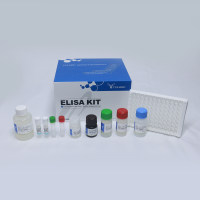Use of Cleaved Amplified Polymorphic Sequences (CAPS) as Genetic Markers in Arabidopsis thahna
互联网
互联网
相关产品推荐

MCT1/Malignant T cell amplified sequence 1 Rabbit pAb(bs-1569R)-50ul/100ul/200ul
¥1180

Recombinant-Saccharomyces-cerevisiae-Genetic-interactor-of-prohibitin-7-mitochondrialGEP7Genetic interactor of prohibitin 7, mitochondrial
¥11116

促销中大鼠肿瘤坏死因子α(TNF-α)/Rat TNF-α/tumor necrosis factor (TNF superfamily,member 2)/Tnf;Tnfa;Tnfsf2;Tumor necrosis factor;Cachectin;TNF-alpha;Tumor necrosis factor ligand superfamily member 2;TNF-a) [Cleaved into: Tumor necrosis factor;membrane for/TNF/ELISA试剂盒
¥3420¥3800

Astrocyte Markers Antibody Sampler Kit
¥500

Recombinant-Human-Leucine-rich-repeat-neuronal-protein-2LRRN2Leucine-rich repeat neuronal protein 2 Alternative name(s): Glioma amplified on chromosome 1 protein Leucine-rich repeat neuronal protein 5
¥14952
相关问答
相关方法

